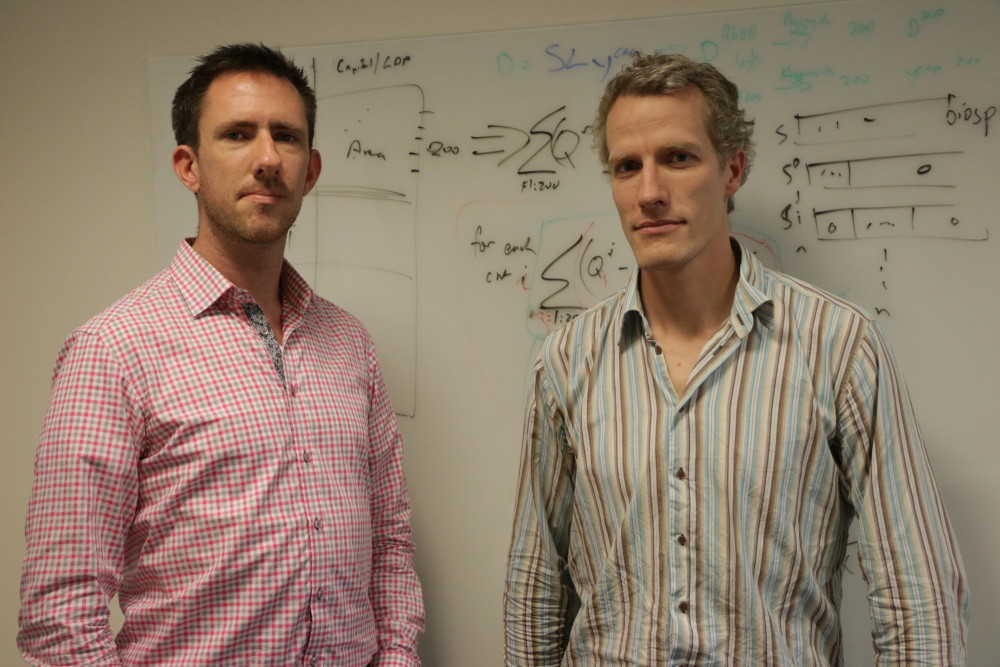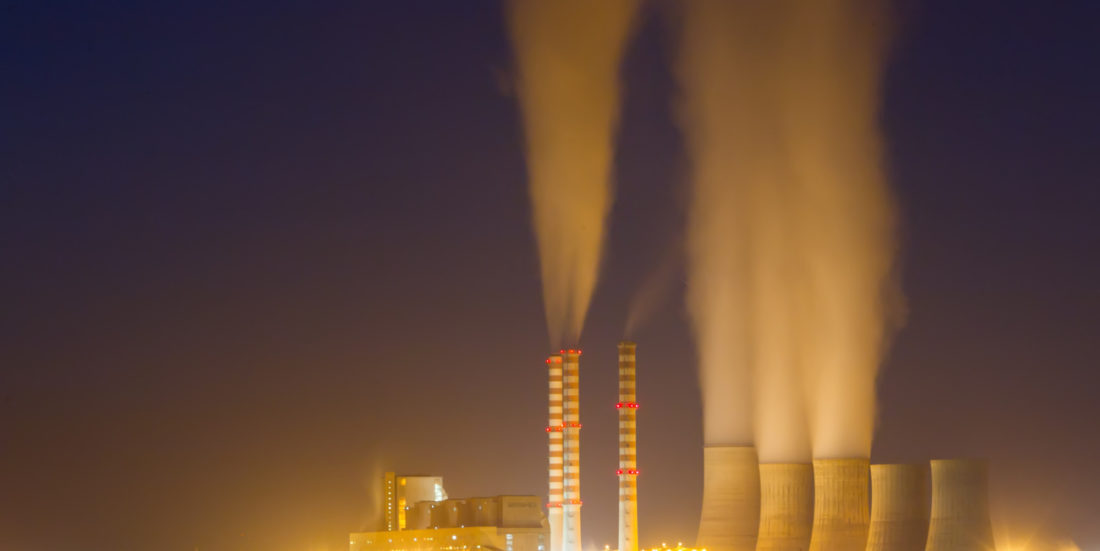Two tickets to Paris to talk about carbon cuts
NTNU was given only two admission tickets to the UN climate talks in Paris later this month. The tickets will be used in part by two researchers from the university’s Industrial Ecology Programme to give a workshop about carbon accounting.
CLIMATE: As any savvy homeowner knows, the first thing to do when you are trying to cut costs is to figure out how you spend your money.
In large part, that is exactly the same problem facing representatives from more than 190 nations later this month when they sit down to hammer out a climate agreement.
Their challenge, in this case, is how to “spend” the roughly 1200 billion tonnes of CO2 the Intergovernmental Panel on Climate Change says the world can collectively emit if we want to keep global temperature increases to “just” 2 degrees C.
The world emitted a record 36.1 billion tonnes of CO2 in 2013, according to the Global Carbon Project. That means at the current pace, we will use up that 1200 billion tonnes in just 30 years.

Daniel Moran (left) and Richard Wood, from NTNU’s Industrial Ecology Programme, have been involved in a project called Carbon-CAP, which involves looking at carbon budgets in a different way. Photo: Nancy Bazilchuk
Needless to say, coming to an agreement on how to keep within our carbon budget is an enormously difficult exercise.
Developing countries say that developed countries have already unfairly gobbled up most of the world’s carbon budget. Developed countries can’t agree on the best mechanism to drive emissions down, given that the entire planet’s economy is currently based on burning fossil fuels.
Against that backdrop, researchers from NTNU’s Industrial Ecology Programme have been actively working on additional ways that can help change the way that we — and policymakers—look at the world’s carbon budget.
- You might also like: Need for a pan-European CO2 storage site in the North Sea
EU workshop
The NTNU researchers, Richard Wood and Daniel Moran, are part of an international effort funded by the EU’s 7th Framework Programme called Carbon-CAP. All told, 10 European universities and research institutes including NTNU have contributed to the effort, which is to develop policy around a consumption-based carbon accounting approach.
Wood, an associate professor in the Industrial Ecology Programme and Moran, a researcher, will present Carbon-CAP at an EU-sponsored workshop during the Paris talks. While the talks are at the core of the 12-day meeting, the 40 000 attendees include lobbyists, researchers, government officials, activities and not least, journalists. On top of the importance of the talks, it’s also an important place to introduce new ideas and new ways of thinking, which is precisely what Carbon-CAP represents, Wood said.

In the months preceding the climate talks in Paris, countries have been making pledges, called Intended Nationally Determined Contributions (INDCs). Some of these cuts are unconditional and some are conditional. The UNEP says there is a significant gap in what is being pledged and what needs to be pledged if we are to make our climate goal of keeping the global average temperature rise to 2 degrees C. Graphic: UNEP
“It’s a different approach to reduce emissions,” Wood said. “It’s a way to think of the consumer as the driver of emissions. Rather than look at power plants and aluminium smelters and cement factories, we take a life-cycle perspective to understand the carbon impacts of all the goods and services that we buy.”
That means accounting for the CO2 from more than just driving your car, or flying overseas he said. Carbon-CAP allows researchers to account for the carbon impact of the food that we eat, the smartphones that we buy, and everything else we consume.
The researchers use a life-cycle accounting approach, which means they determine the environmental “costs” of all these different items, from when they are manufactured, during their useful life and all the way until we are done with them. Think cradle-to-grave.
While the concept of consumption-based carbon accounting or “carbon footprinting” has been around for some years, it has yet to have an impact in the policy arena. Carbon-CAP seeks to address this in two ways. The first is to assess the robustness of the carbon footprint models that policies are based on, while the second is to develop novel policies that provide additional means to tackle the CO2 budget.
- You might also like: Hope for the climate, hope for clean air
On beyond smokestack emissions
Wood said that one major challenge in cutting greenhouse gas emissions is that policymakers need to impose policies that go beyond just capping CO2 emissions from smokestacks.
That’s hard enough, as illustrated by the struggles facing the Obama administration’s recent efforts to regulate CO2 emissions from US power plants — but nevertheless, it won’t be enough, Wood said.
“It is relatively easy to put emissions caps on power stations, it is relatively easy to look at cement and steel mills, but when consumers keep demanding more, those policies may not solve the problem,” he said.
UN Climate Talks in Paris
More than 190 nations will gather in Paris starting in late November with the goal of signing a climate agreement that will limit global warming to 2 degrees C.
NTNU and SINTEF conduct research on many different aspects of climate change, from psychology to carbon capture and storage. Much of this research will be highlighted on Gemini.no in the weeks leading up to the conference.
The Carbon-CAP project gives policymakers the option to see where additional emissions savings can be made on top of regulating smokestacks.
“I think of it as increasing the surface area of the problem, ” Moran said. “That way, more different people in society can help in reducing the carbon footprint, not just the people who own the smokestack.”
Different tools to control different emissions
By making the different drivers of emissions very clear, the Carbon-CAP project helps policymakers to think broadly about ways to control these emissions.
In some cases, it might make sense to use regulations or rules to control emissions, Moran said.
For example, policymakers “might make a rule that you are not allowed to trade in high-carbon products,” he said. “Or you might impose taxes” on high-carbon products.
Alternatively, an additional approach could be to encourage people to change their behaviour in some way, based on the different environmental costs of the different items we consume, he said.
“There might be advertising campaigns for certain products,” Moran said, to encourage people to eat less imported carbon-intensive meat or vegetable, as one example.
- You might also like: Regional cures for planetary fever
The ideal outcome
On the eve of the Paris talks, the United Nations Environmental Programme has released an assessment of what nations have already pledged to do (called Intended Nationally Determined Contributions, known as INDCs).
The bottom line is that there is progress, but more is needed. If we do nothing but what countries have already promised, both conditionally and unconditionally, the UNEP says that we will only limit the average global temperature increase to 3-3.5 degrees C by 2100.
That’s better than what happens under a “business as usual” scenario, where global average temperatures will spike by 5 degrees C or more. To put this in perspective, consider that the last ice age, when ice sheets covered northern North America and Europe with 3-4 km of ice, was brought on by a 5 degree C. decrease in average global temperatures.
Wood and Moran say they are cautiously optimistic that even if not enough cuts are agreed to in Paris, eventually the world will get it right.
“To me the big issue is that the rich wealthy countries, the US and EU, they are driving consumption, but the places where emissions are going crazy high is India and China, and SE Asia,” Moran said.
“The dream scenario would be the engagement of the US and EU in changing our consumption habits in order to drive emissions reductions both domestically and in these developing countries,” Wood said.





